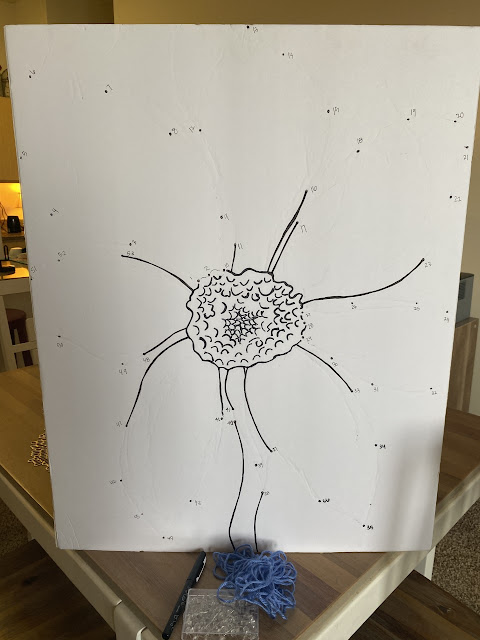Media Project
In our Neuroaspects class, we were given a media project assignment where we are given a low-cost household item to create a therapeutic, OT intervention for a hypothetical client. My item was "yarn".
Reflection:
I was very excited about this project when we first discussed it in class. Yarn was an item I could do so much with. But after a few hours of getting thoughts down on paper, I didn't really have much to go on. So, I went back to the basics and figured out what my client needed first. My client is Alice, a 51-year-old female with secondary-progressive multiple sclerosis that was first diagnosed 18 years ago. She has a history of hypertension and recently had some falls. Some things that stood out to me that were important to Alice were that she was married and lived in a two-story home in a rural area. Her husband works 6-7 days a week, so he was not there as much to help her with tasks if she got tired. She was a teacher, but retired from it because it was hard on her body. She misses working with kids and being active in her community. She loves to garden and read magazines/newspapers.
I know now I wanted to create something that would help her sensation issues with touch, her decreased fine/gross motor skills, balance, organization, motor planning and working memory (all areas that were concerns in her case). I begin to focus on her "gardening" and what is something that she would find interesting and not too child-like. I began to think about the "dot-to-dot" games that we played as a child that made pictures. I made a larger scale of this using a trifold board, sharpies, and push pins. I freehanded the flower and drew the numbers big enough so she would be able to see.
I would have this client stand up and try to do this task to work on standing balance, stamina, and gross motor skills. She would use the yarn and start at number 1 and work her way around. She must make a full circle around each number in order to keep it from sliding off. This will work her organization skills, fine motor and motor planning skills. Holding the yarn and drawing the "loop" around each number would help with the sensation in her fingers and grip.
I think this project could be made with a wood board instead for future use to make sure it withstands the test of time. I think you could add more colors of yarn, more numbers, and more push pins to eventually "color in" the entire picture. Some challenges I ran into is that sometimes the push pins want to be flimsy and fall out of the board. I think if I put a stopper on the back or hot glued them down, they would stay better. I think this board could be easily adapted to fit out clients needs. We could use piper cleaner twister together or something sturdier if our client could not grip the yarn. We could also have the client put in the push pins first which would work on a little more dexterity and grip strength if we wanted to make this intervention harder. I think this project would be great for her too that she lives in a rural setting. This board could serve for many issues she is having and help her without having to go to town for OT as often. I would recommend her doing this at least 6-7 times over the next two weeks.
I also thought it was very beneficiary to discuss my project with my other classmates who had the same client to see their thoughts or critiques on my intervention. This helped me to see that it is "okay" to ask for an opinion or client from someone else assisting the same client. I think this is why inpatient rehab facilities, for example, are extremely successful for certain clients because everyone gets to work together and contribute their thought processes to the group.
I think my biggest take away is that we don't need to spend tons of money on the nicest equipment for our client, we can make an OT intervention out of just about anything. We just need to use grit and our knowledge from school to see what would benefit our clients the most. Our professions is all about the holistic and client-centered approach. Whenever I got confused or worried about my intervention, I just wrote out questions to myself: Is it helping this specific issue? Will she find this meaningful? Will she enjoy this? What are my goals for her?
Overall, I think this was one of the most helpful projects we have done in OT school so far. It showed me that we can do so much with just a basic household item. Our client struggled with seeing "why" OT was needed with her case and I think this board would be a great tool to show her what OT does exactly, and what we are working on specifically to meet her goals. At first, I thought yarn was not quite the best item to get, but at the end of this project I began to think of other tasks that would be useful by using yarn. I think this project helped me a lot to actually "think like an OT". I had to learn the clients interests, routines, and habits; then, compare them to what she needed physically, mentally, and emotionally to get better. I love this creative side of OT, and it is one of the main reasons I decided to go into this field.
Here is a picture of the materials I used:
Here is a video of me demonstrating how to use this dot-to-dot game.

Comments